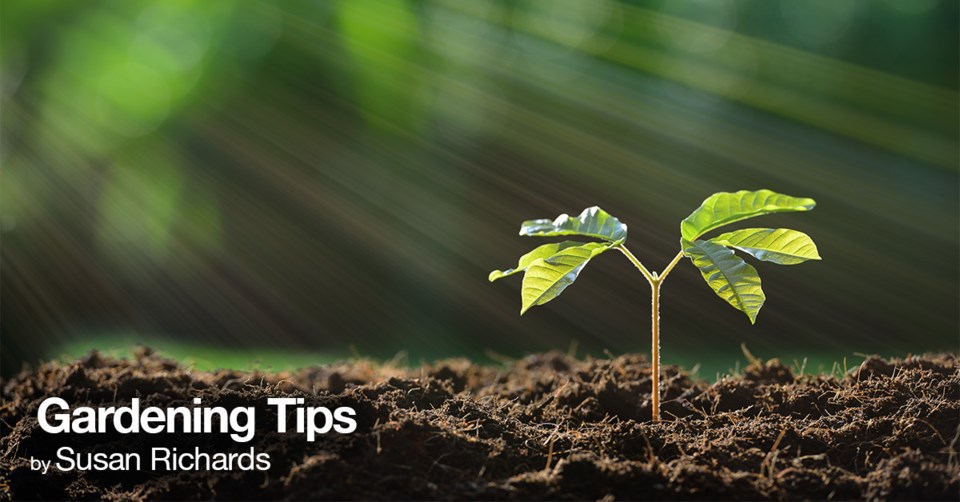I hope your gardens have survived the gusty winds we have had over the last few weeks. I had a customer comment that watering was a constant chore as strong winds sucked the moisture from the soil.
We have noticed that at the garden centre too. The newly planted annuals are having to be watered almost every day!
Our soil is very sandy and the plants haven't had a chance to set down deep roots yet. Be sure you are diligent about watering all your newly planted areas.
A note of caution about watering though. If you have heavy clay soil, be sure you check down several inches into the soil for moisture before watering. The top of the garden may look dry but clay is notoriously poor in draining. You run the risk of rotting roots if you water often when in fact the soil is saturated down below.
A word of advice about planting as well. Planting too deep is the number one reason we see trees and shrubs performing poorly and eventually dying.
Numerous times I have checked trees that are suffering to find I have to dig through 3" of mulch and several inches of soil to find the top of the original rootball.
Or when I look at a dead tree that has been returned for a guarantee, I see the wet soil line quite a bit higher on the tree trunk than the original level it was growing at in the container.
When you dig a hole to plant a tree or shrub, dig only as deep as the height of the root ball. If you dig a deep hole and add good soil in the bottom, once planted, the tree can sink down as that loose soil compacts, resulting in the tree being too low in the bed. You want firm soil beneath your tree so it stays at the level planted.
If you plan to mulch around your tree, plant it a little higher and only put a light layer of mulch over the root ball. A thicker layer of mulch can go in the rest of the garden. Damp mulch piled up on the crown of a tree, shrub or perennial can cause rot to set in. That can kill a plant too.
Another problem I attribute to some plants dying is being planted too close to the house, especially under an overhang. I discussed a problem a woman had with the back half of her cedars dying this past winter. It certainly wasn't a harsh winter but we didn't get a lot of snow early in winter to insulate plant roots.
After much discussion I think that the problem with the cedars was being planted quite close to the foundation as well as under an overhang where very little snow gathered on the back side of the cedar.
The roots were exposed to the freeze/thaw cycle throughout the winter and were damaged. The foliage fed by those damaged roots then died. The front half of the cedars were fine since snow did insulated the roots in that area.
Snow is a great insulator. It allows the ground to freeze and stay frozen throughout the winter. As snow melts in spring, it supplies moisture to roots.
Look at an area carefully before you commit to planting. Be sure that it is a spot favourable for healthy growth. Watch out for bone dry areas underneath wide overhangs. Little natural moisture gets into that soil.
You have to make a commitment to irrigating throughout the season, right up until the ground freezes. Then, if we have a dry spring, watering thoroughly as the ground warm up.
Don't plant too close to a building. As plants fill out, light and air movement is cut off at the back of shrubs. The small plant you place a foot from the foundation is going to grow! You may end up with diseased leaves from poor air circulation. Eventually the entire back portion of the plant may die.
